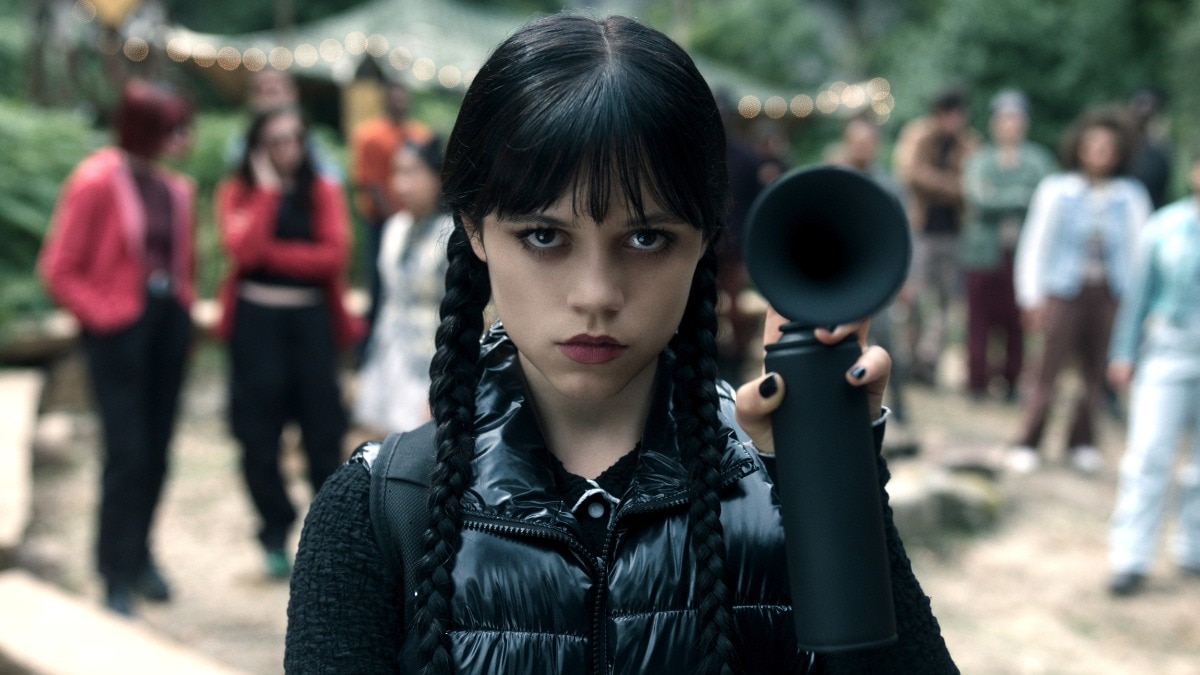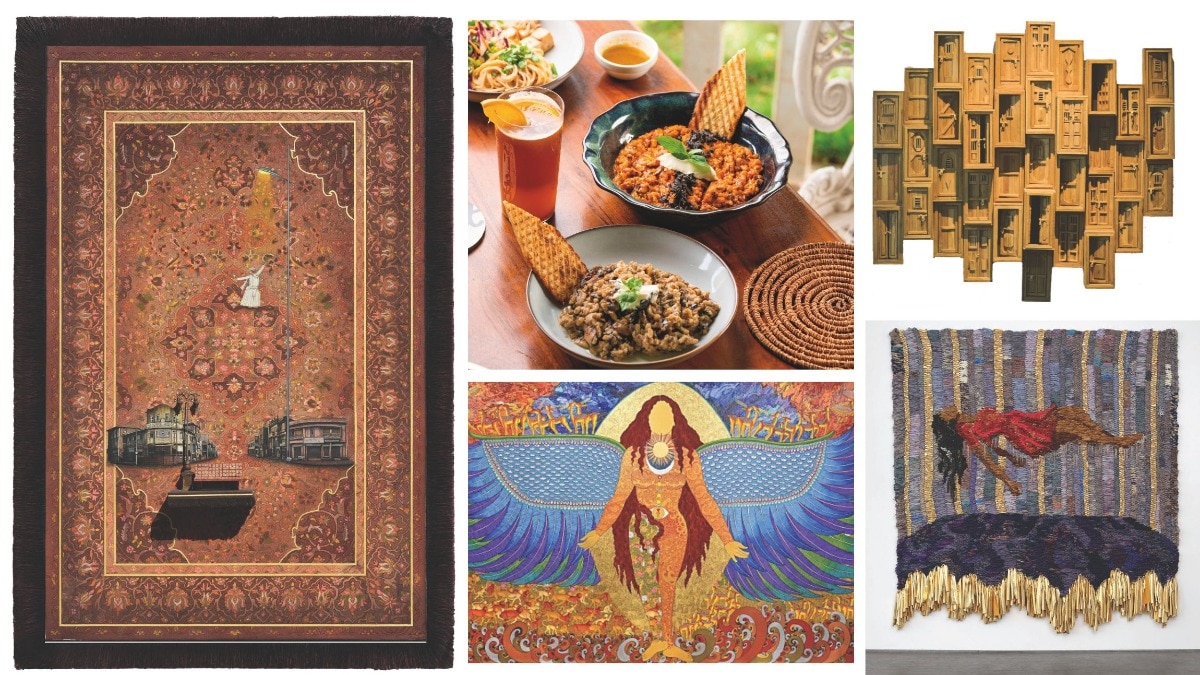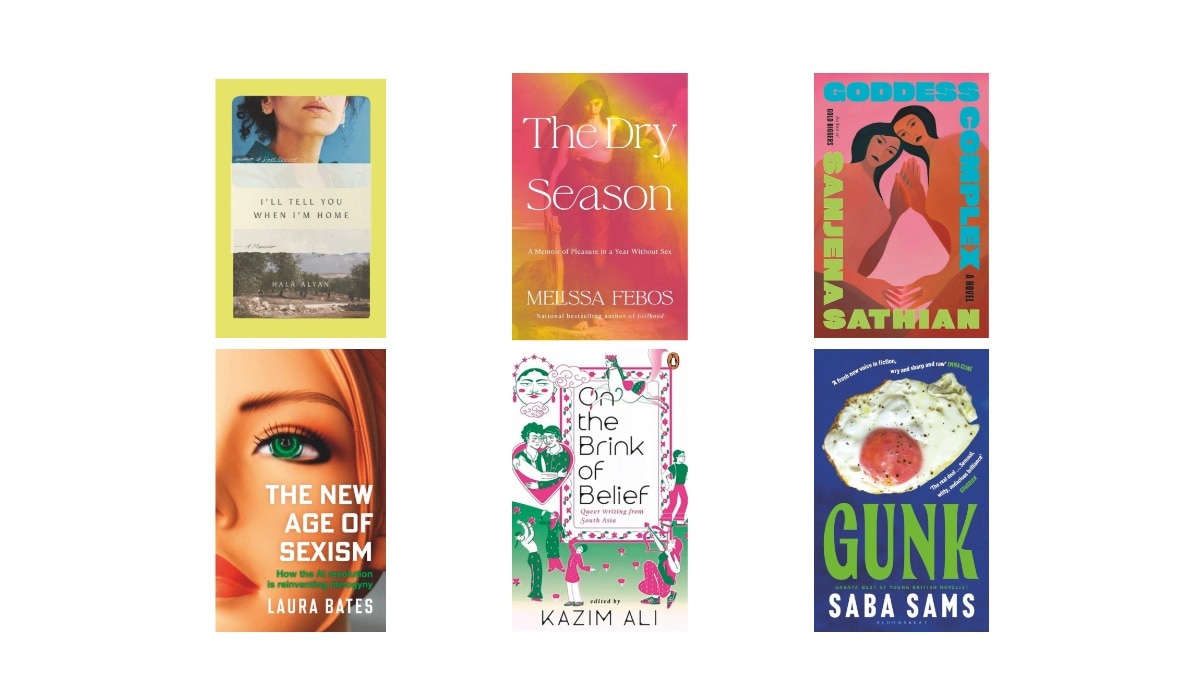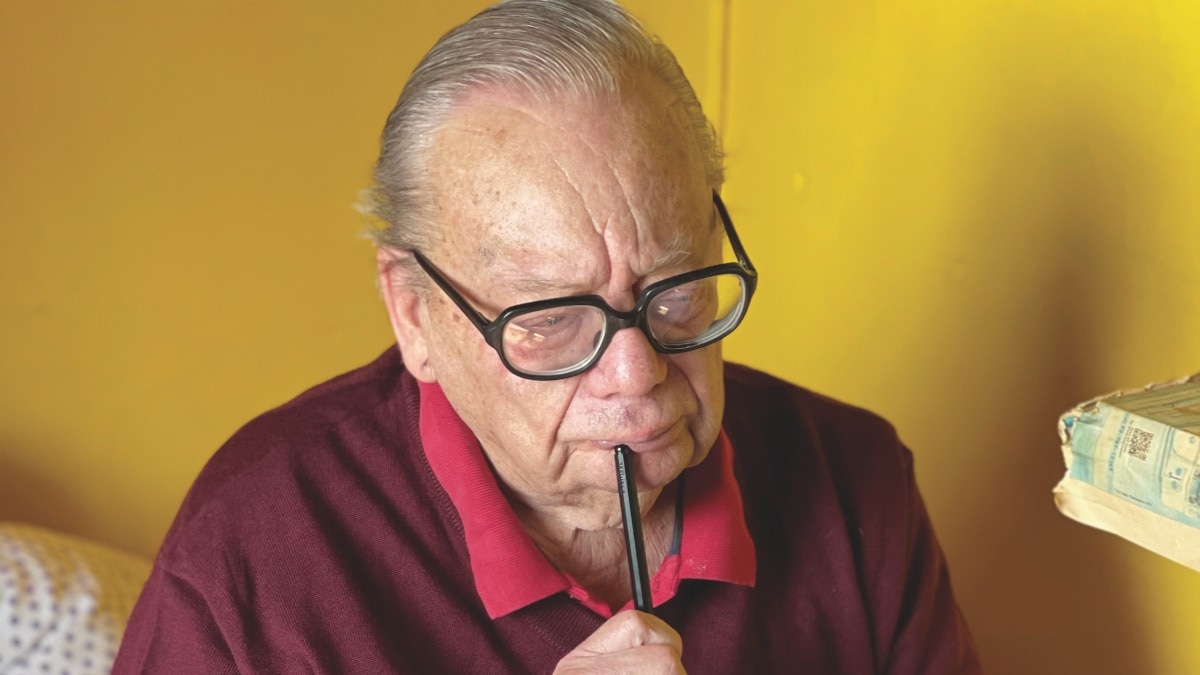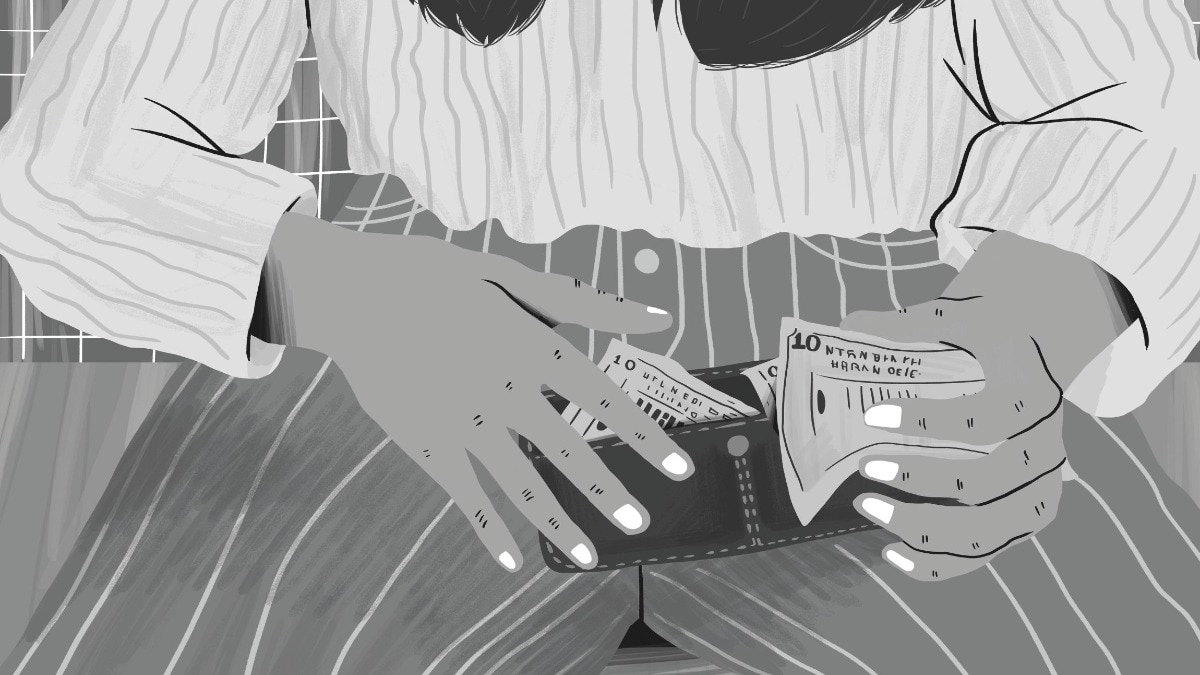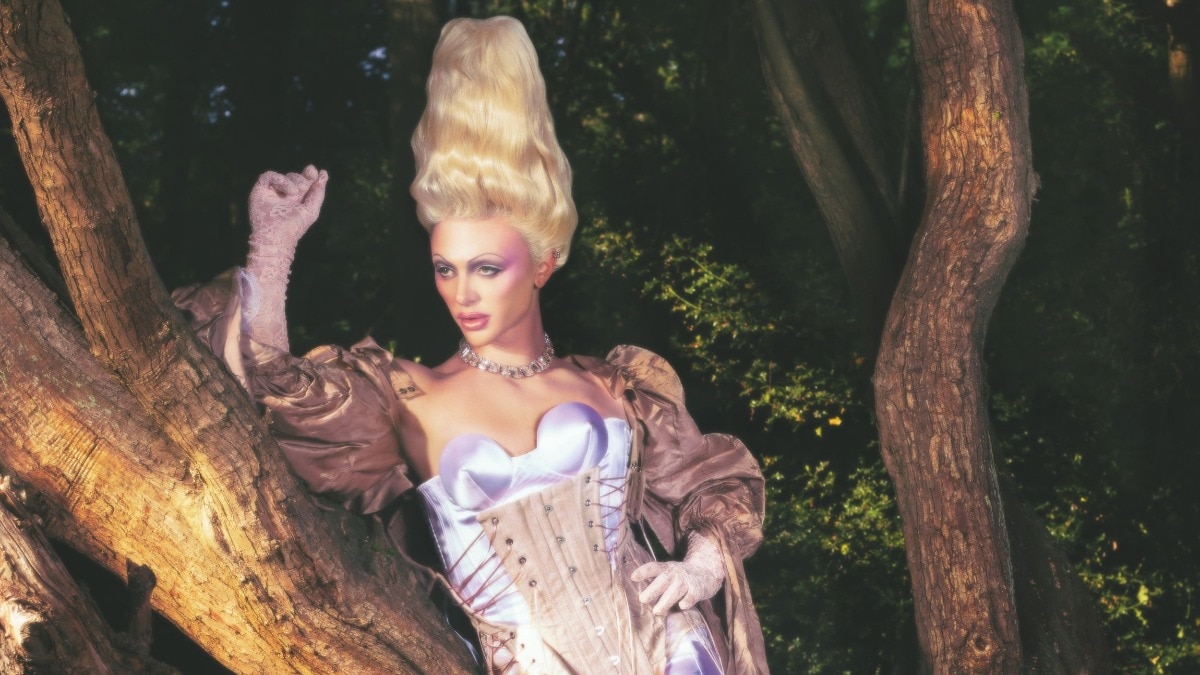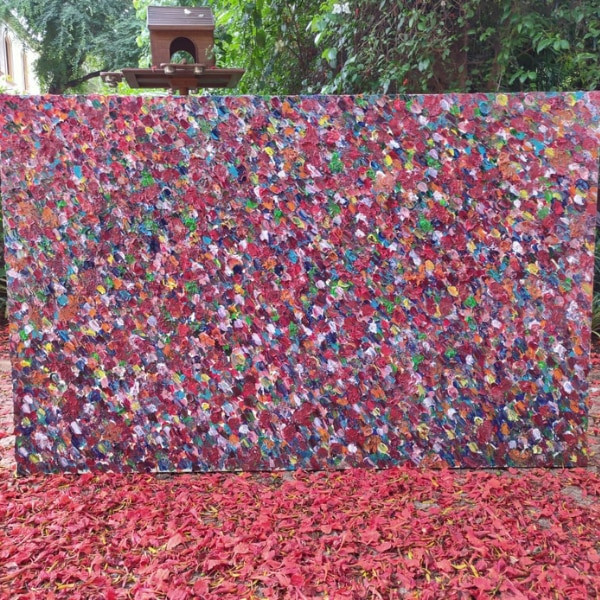
The secret to having the walls in your home tell a story? Start with the art
From the deeply personal to the universally felt, artist Michelle Poonawalla reflects on how art carries our shared inheritance.


We live in a world that is constantly changing and data-driven, but we have something that we can always lean on: a human practice that has existed for as long as humans have—the need to tell stories and to listen to them. Every piece of art, in some respect, is a story, with the ability to connect the mosaic of our lived experiences into something larger. Art has been, and always will be, a universal language of truth—a record of the human experience, from cave paintings to present-day digital installations. In this regard, each piece of art is a story that links our individual experiences to universal themes.
Art is not just "decor" or "decorative"; it is a meaning-making process, using the act of creation and the hand of the creator to convey a small aspect of their mind, allowing the viewer to respond, interpret, and connect with it, and ultimately, with them.
Involving your own stories in your own work allows your audience to create a unique connection to the experience you are articulating. By offering your experiences through brushstrokes, songs, movements, and installations, you are now engaged in the larger conversation. Art is not just a proven form of communication, but rather, it has allowed us to carefully unpack our own stories. From periods like the Renaissance, which ushered in an era of profound intellectual and artistic rebirth, to movements of resistance that used visual and performing arts to protest injustice and demand freedom, art has consistently stood at the forefront of change.

A work of art brought to life many years ago can still stir up feelings, offer insights into modern existence, and speak to central themes such as love, suffering, triumph, identity, and loss. It reminds us that while we are different, we are all human, seeking the same things, and experiencing the same challenges. My own art also comes from personal experiences and emotions, for example. ‘The Indian Summer’ is from the beautiful summer gulmohar tree, with its fire-red flowers and petals strewn on the ground that almost form a carpet. Another one is the ’Lily Pond’, brought to life with the inspiration of my lily pond and the peace and tranquillity it brings.
Vincent van Gogh's The Starry Night (1889) is also an intensely personal reflection of the artist's emotional and spiritual state, transforming a night sky into a swirling, wondrous inner landscape. Pablo Picasso's stirring Guernica (1937) operates as a powerful anti-war statement. The figures are fractured, and the colour palette hobbles a reader through the destructive onslaught that the aerial bombing caused on innocent lives in war—a shriek that resonates and endures against the brutality of rage. Another great reference point for art enthusiasts is Frida Kahlo's self-portraits, which tell her deeply personal, humbling stories of her physical suffering, her emotional pain, and her layered cultural identity with works such as The Two Fridas (1939) allowing Kahlo, and now her oeuvre, to be a relatable beacon of resilience and search for voice.
Banksy has been using his public murals and installations to convey satirical, sometimes biting, truths about issues in contemporary society and politics, ranging from consumerism to surveillance. Banksy has effectively been using the social fabric of daily life to enter the public consciousness through storytelling, creating immediate and engaging narratives that challenge authority and critique the status quo in a way that people can see and engage with immediately and tangibly. Also, India's long history of art includes many examples of storytelling; consider Raja Ravi Varma, whose remarkable paintings such as Shakuntala (late 19th century) mixed academic styles taken from the European tradition with Indian themes and Indian mythology, bringing pacing from the epics of Sanskrit literature into the now and communicating those stories to larger audiences, enforcing a new visual narrative for modern Indian art.
Or Amrita Sher-Gil's works, such as Three Girls (1935), which depict the lives, identities and emotional worlds of rural Indian women living through the melancholy of their everyday lives, telling stories about identity and the inevitable struggle as society underwent transformation during the times she lived in. India’s renowned MF Husain's exuberant art, especially in his Horses series, sheds a powerful light on stories of energy, freedom, and an uncontrollable inner spirit while also often referencing Indian myths and political and social happenings. All these artists, and millions more throughout time and culture, show that art does not simply decorate; it is a necessity that reflects on and feeds humanity and its essential being, one captivating narrative at a time.
In a world constantly straining for connection—to be seen, heard, understood—art becomes a powerful marker of that search. Whether you’re standing in front of a painting in a pristine gallery, stumbling upon bold street art that transforms a city corner, or walking through a visual installation that stirs something visceral, you’re not just looking. You’re entering a story. And it's in that moment that the artwork becomes timeless.
Lead image: Lily Pond by Michelle Poonawalla
Also read: This beautiful book turns India's relationship with its rivers into a work of art and activism
Also read: Poet and performer Navkirat Sodhi shares her journey of survival, strength, and self-love

